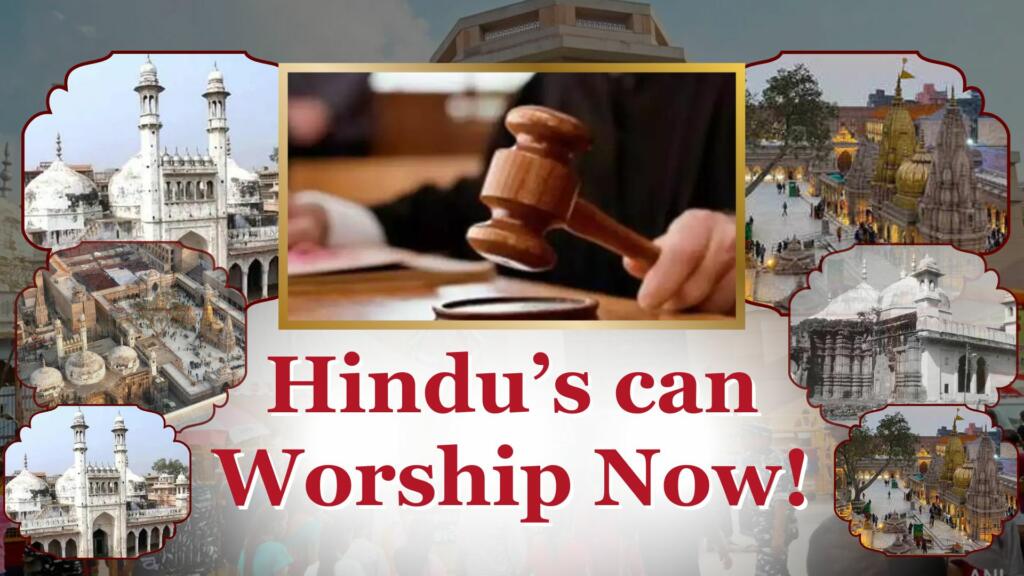In a recent ruling by the Varanasi district court, a new chapter unfolded in the longstanding dispute surrounding the Gyanvapi mosque. The court’s decision, coming six days after providing litigants with copies of an Archaeological Survey of India (ASI) report, stated the existence of a Hindu temple before the mosque’s construction. The conflict between Hindu litigants and the Anjuman Intezamia Masajid Committee took a contentious turn, further fueled by the court’s directive to allow prayers in the southern cellar of the mosque complex which was banned by Mulayam Singh in 1993.
Court’s Directive on Puja in Gyanvapi Mosque
The district court’s order permitting a priest to perform puja in the disputed southern cellar marked a significant development. The directive instructed the District Magistrate/Receiver to facilitate the puja within seven days. The Anjuman Intezamia Masajid Committee immediately expressed opposition, vowing to appeal the decision, setting the stage for further legal battles.
Background of the Dispute
The historical context of the Gyanvapi mosque and the alleged destruction of the Kashi Vishwanath temple form the core of the dispute. Hindu litigants contend that the mosque was built on the ruins of the temple, destroyed during the 17th century under Aurangzeb’s rule. The existing Kashi Vishwanath temple stands adjacent to the mosque, intensifying the emotional and historical stakes.
Archaeological Survey of India’s Report
The ASI report played a pivotal role, affirming the existence of a Hindu temple predating the Gyanvapi mosque. It highlighted the destruction during Aurangzeb’s reign and modifications in the existing structure. The report’s findings added weight to the claims made by Hindu litigants, influencing the court’s subsequent directives.
Also Read: “Controversial, What about Babri, and More” How Foreign media portrayed Shree Ram Mandir
‘Vyasji ka Tehkhana’ ( The Southern Cellar)
Central to the dispute is the southern cellar, referred to by Hindu litigants as ‘Vyasji ka Tehkhana.‘ They claim that prayers were abruptly halted in 1993 by Mulayam Singh Yadav, leading to the removal of the cellar door. The court order now seeks to reinstate controlled puja in the cellar, reigniting religious practices that have been dormant for decades.
Pathak’s Petition
Shailendra Kumar Pathak’s petition triggered the court’s intervention, leading to the subsequent directive. The court acknowledged discrepancies in its handling of the application and underscored the importance of addressing both parts of the petition. The legal battle gains complexity, raising questions about due process and fairness.
Anjuman Intezamia Masajid Committee
The Anjuman Intezamia Masajid Committee vehemently opposed the court order, asserting that no idols were ever present in the cellar. They contested the claim of the Vyas family’s possession and readiness to approach a higher court. The contested ownership of the cellar becomes a focal point in the ongoing dispute.
Varanasi District Administration’s Actions
The district administration took possession of the southern cellar on January 24, following the court’s orders. District Magistrate S Rajalingam stated their compliance with the court’s directives, adding another layer of administrative involvement in the contentious matter.
In conclusion, the Gyanvapi mosque controversy is emblematic of the intersection of faith, history, and legal intricacies. The court’s directive allowing prayers in the southern cellar adds a new dimension to the longstanding dispute. As the legal battle continues, it becomes imperative to maintain due process and address pending matters, ensuring a balanced approach to resolve the complex Gyanvapi mosque controversy.
